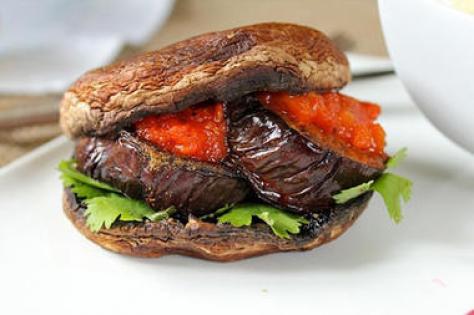We know that food is complex and supplementation cannot beat the real thing - there are so many chinks in the chain that we just don't know about! This is why it is always important to think ‘food first’ when optimising your diet for health and wellbeing.
Although Spring is here, everyone appears to be feeling tired and “run down” as we approach the end of 2014. I am also starting to see more athletes as they prepare for their seasons ahead, a time that takes a toll on the immune system. So lets take a look at my favourite foods to help your immune system function at its best!
Eat fermented dairy foods
Fermented dairy products contain live bacteria, which also boost immune health. Try and think ‘food first’ by choosing yoghurts, fermented milk drinks (such as Yakult and Kefir) and kimchi.
Kimchi has been making an appearance on various social media pages in recent times but many people don’t really know what it is, or what to do with it. Kimchi is a traditional Korean side dish that is made from fermented cabbage. You can buy it from most Asian supermarkets or find a recipe online to make your own.
How?
Enjoy yoghurt as a healthy snack, add fermented milks to smoothies, add kimchi to almost anything including, soups, stir-fries, fried rice, casseroles or salads.
If you experience a lactose intolerance you may see an improvement in your symptoms when you regularly consume cultured dairy products.
Eat garlic
Garlic has been hailed an immune boosting superstar for centuries due to its sulphuric compounds that have been seen to reduce bacteria and infection.
Although we haven’t seen these results in well-designed clinical trials in humans just yet, laboratory results are promising. It is important to note that garlic tablets will not offer the same effects of the sulphuric compounds in garlic and it is believed that these benefits are highest in raw garlic, as heating can reduce this antibiotic effects.
How?
My family remedy for a cold is a garlic, lemon and honey drink but if you can’t stomach it, add garlic to stir-fries and casseroles, roast in the oven with other vegetables and rub on toast when making bruschetta.
Eat different coloured fruits and vegetables everyday
It may sound boring in a world of fad diets, supplements and the next super food, but eating messages for all things health always come back down to our fruit and veggies.
Your immune system requires carbohydrates and various micronutrients such as vitamin C, vitamin A, folate and selenium to maintain its function. Fruit and veggies will supply your body with these in a low kilojoule package to help maintain a healthy weight. To get the most out of your produce, you need to think colour! There are over 400 pigments in our fresh fruit and veggies with each offering different health benefits, including immune support.
Vitamin C won't prevent a cold from occurring, but may help to reduce the duration of a cold and the severity of your symptoms. Fruits and veggies containing red, orange, green and purple pigments are often high in vitamin C. I tend to take a vitamin C supplement when I have a cold to try and help reduce the duration and symptoms.
How?
Enjoy fruits with an orange pigment such as oranges or mandarins as a healthy snack or dessert, start a meal with a vegetable soup made on a tomato base, start the day with a smoothie made with your favourite vitamin C containing fruit or greens such as berries, kale or spinach.
Eat almonds and chickpeas
Almonds and chickpeas contain immune boosting zinc along with other health improving properties.
How?
Enjoy a satiating snack of roasted almonds, add almonds to your favourite muesli and roast chickpeas with spices for a flavoursome and crunchy snack.
Eat eggs, lean meats and poultry
By eating eggs, lean meats and poultry you can take in iron in a more bio-available way compared with non-animal sources. Iron supports healthy red blood cells and a strong immune system. Red meat and poultry also contain zinc for immunity and protein to help maintain muscle mass and strength.
How?
Include red meat in your main meal (no more than three times a week), enjoy poached eggs with avocado on grainy toast for a satiating breakfast or make a vegetarian frittata for an easy immune supporting meal.
Eat healthy carbohydrates
This is particularly important for those who exercise regularly. Although the benefits of exercise greatly outweigh any negatives that may occur, we know that exercise can suppress the immune system and produce stress hormones. Eating appropriate amounts of carbohydrate has been shown to reduce this response. This does not mean you need to carb load in order to fight the winter cold, but enjoy good quality carbohydrates in portion sizes appropriate for your exercise levels.
How?
Enjoy healthy carbohydrates such as milk, yoghurt and fruits for snacks and add legumes and grains such as quinoa, barley and faro as part of your main meal.
By including some of these foods as part of your immune supporting diet you may dodge the dreaded lurgy – or at least reduce the time it takes to recover.


